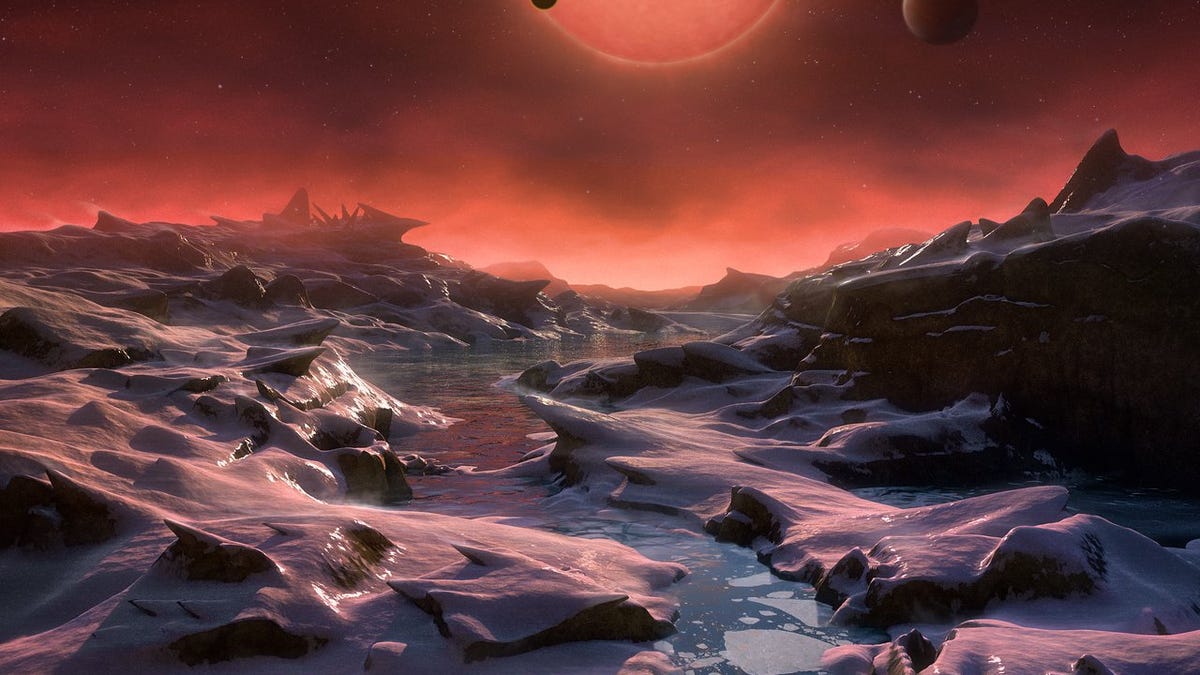First dwarf star planets boost search for extraterrestrial life
Three planets are the first to be seen orbiting an ultracool dwarf star, and could be our best hope yet for finding extraterrestrial life.
Ultracool dwarf stars are common in the Milky Way galaxy. They live for a very long time, but because they're so dim, they're not easy to see.
One such is the star 2MASS J23062928-0502285 (now also named TRAPPIST 1), located just 40 light-years from Earth in the constellation of Aquarius. It's just 8 percent the mass of the sun, and has about 0.05 percent of the sun's luminosity. It's only a little bigger than Jupiter, and is invisible to the naked eye up to large amateur telescopes.
It's around this tiny, dim star that a team of astronomers led by Michaël Gillon of the Institut d'Astrophysique et Géophysique at the University of Liège in Belgium have discovered three planets, orbiting in the habitable zone: neither too hot nor too cold for liquid water. They used the European Southern Observatory's TRAPPIST telescope, hence the star's new name.
These are the first planets found orbiting an ultracool dwarf star, which is exciting because now we have a real shot at detecting extraterrestrial life.
"Why are we trying to detect Earth-like planets around the smallest and coolest stars in the solar neighbourhood?" Gillon said in a statement. "The reason is simple: systems around these tiny stars are the only places where we can detect life on an Earth-sized exoplanet with our current technology. So if we want to find life elsewhere in the Universe, this is where we should start to look."
The team found the planets by observing regular dimming in the star, indicating that something was passing between it and Earth. To search for signs of life, they are going to look at the planets' atmospheres, if they have any. With a brighter star, the light from the star would be too bright for this effect to be observable, but for TRAPPIST 1, its proximity and dimness make it the perfect candidate to observe its planets' atmospheres.
By examining the atmospheres of these planets as backlit by the light of TRAPPIST 1 in different wavelengths, the astronomers will be able to determine their composition, which will help determine the likelihood of life forming on those planets.
Although the star is very small, all three planets have a similar size to Earth's. However, their orbital periods are much, much smaller. One planet's orbit is 1.5 days, the second's is 2.4. The third planet has been trickier to pin down, ranging somewhere between 4.5 and 73 days. The system's structure, Gillon said, is closer to Jupiter and its moons than the Sun and the solar system.
But, while they are much closer to the star, the two inner planets receive four times and twice as much radiation as the Earth respectively, because TRAPPIST 1 is so dim.
The discovery opens up a new direction in the hunt for exoplanets and extraterrestrial life, to be undertaken by the SPECULOOS project at the ESO's Paranal Observatory in Chile. Around 15 percent of the stars close to us are ultracool dwarf stars.
You can read the full paper here.


